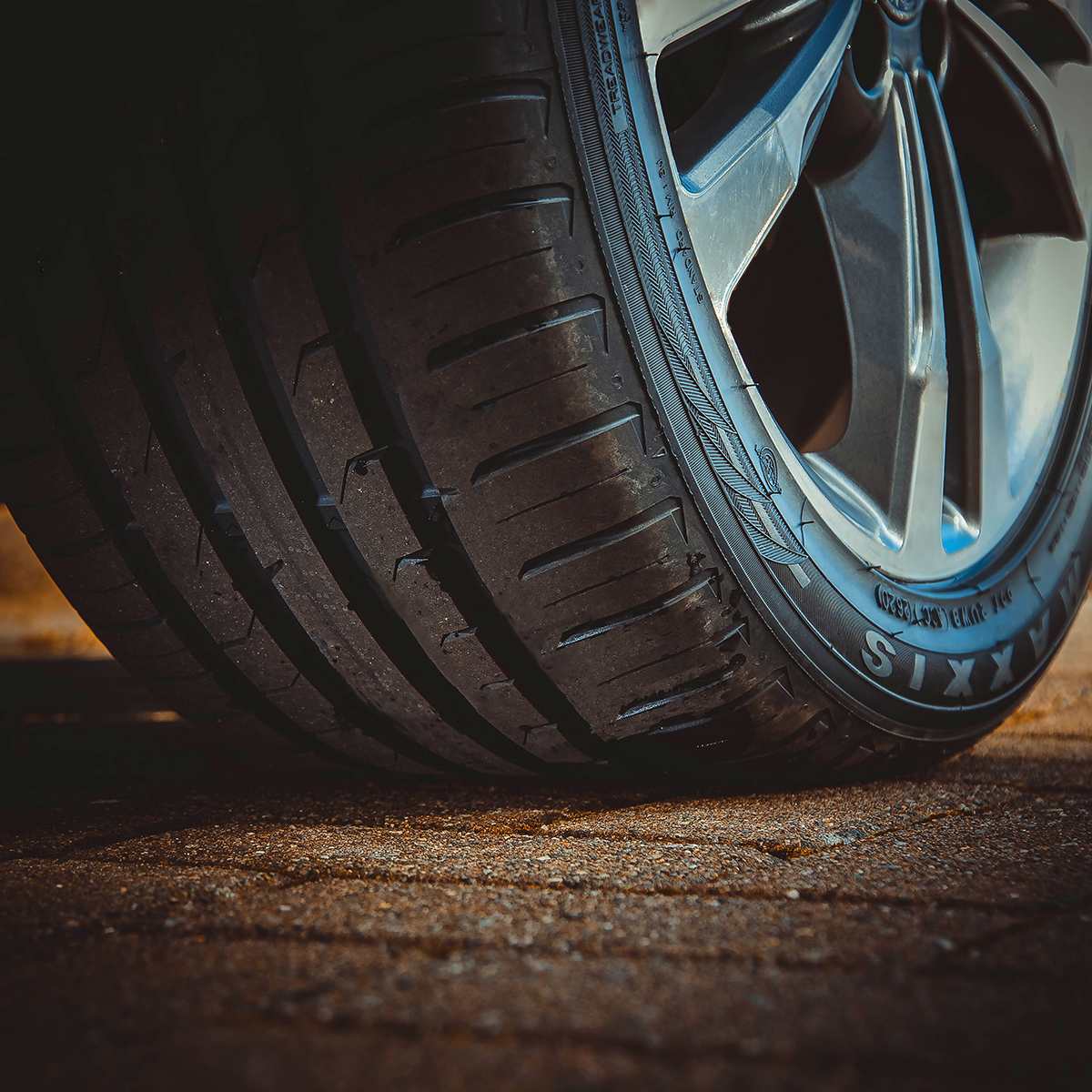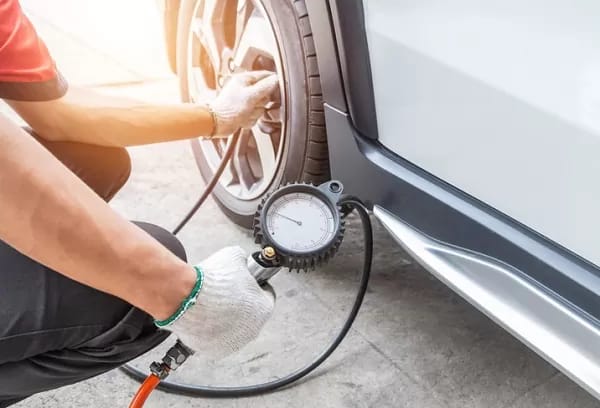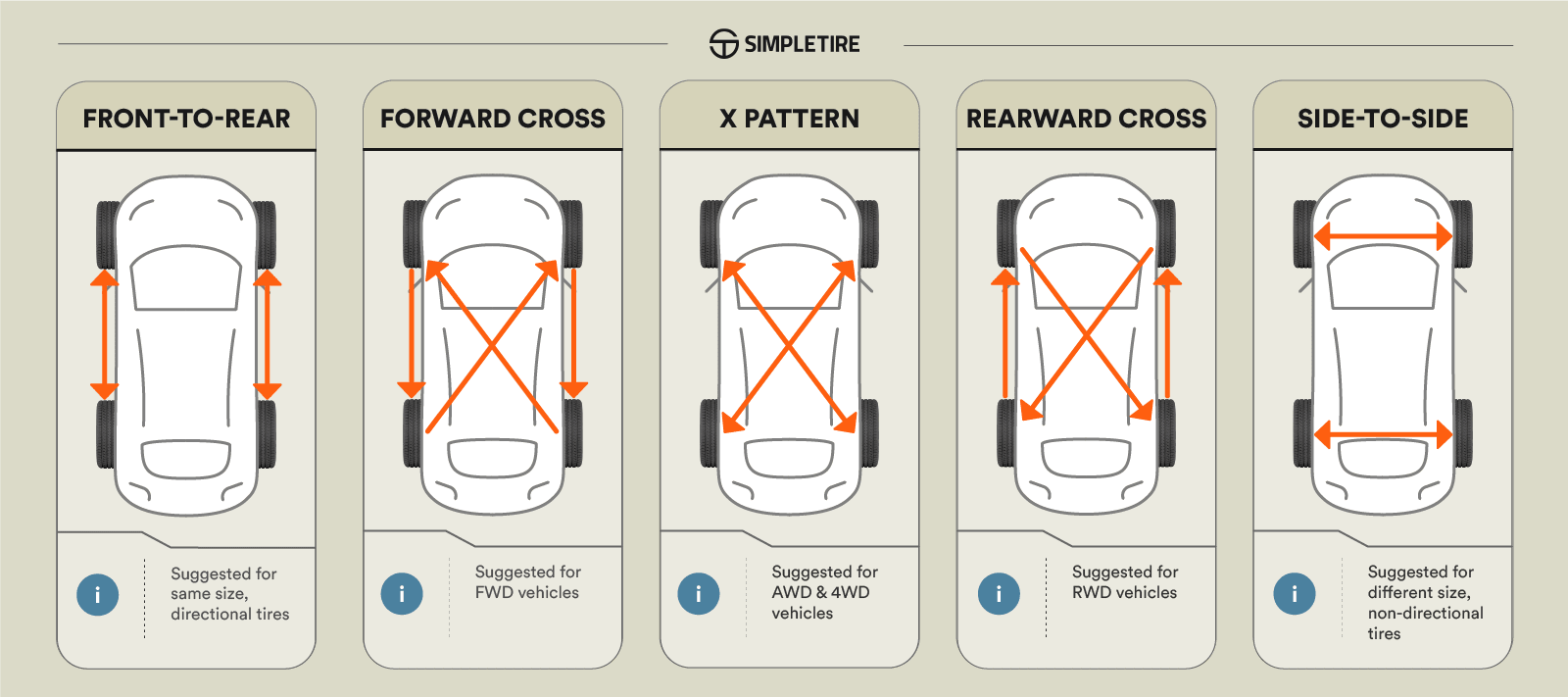Tire maintenance & safety
Best price guarantee
Tire replacement coverage
24/7 roadside assistance
Easy returns

Uneven tire wear can compromise your vehicle's performance, handling, and safety. Not only does it lead to a rougher ride, but it can also cause premature tire failure and costly replacements. You need to keep a check on the causes of uneven tread wear, as this practice helps maintain your vehicle's longevity while ensuring a smooth, safe driving experience. By understanding the factors that contribute to irregular tread wear, you can take proactive steps to prevent it and extend the life of your tires.
Let’s delve into the common causes of uneven tire wear, provide tips on identifying wear patterns, and offer practical solutions to help you keep your tires in optimal condition.
What Causes Uneven Tire Wear?
Uneven tire wear occurs when the tread on your tires doesn't wear down at a consistent rate. This can be caused by a variety of factors—from improper tire inflation and misalignment to worn suspension components and poor driving habits.
One of the most common causes of uneven tire wear is incorrect tire pressure. Overinflated tires tend to wear more in the center of the tread, while underinflated tires wear more on the edges. Maintaining the manufacturer-recommended tire pressure is essential for even tread wear and optimal performance.
Misalignment is another major contributor to uneven tire wear. When your vehicle's wheels are not properly aligned, it can cause your tires to "scrub" against the road, leading to rapid and uneven wear. Misalignment can be caused by hitting a curb, pothole, or other road hazards, as well as by worn suspension components.
Worn shocks, struts, and other suspension parts can also lead to uneven tire wear. These components are designed to keep your tires in constant contact with the road, and when they wear out, they can cause your tires to bounce or vibrate, resulting in cupping or scalloping of the tread.
Unbalanced tires can also cause uneven wear. When a tire is not balanced, it can cause vibrations that lead to irregular tread wear. This is why it's important to have your tires balanced regularly, especially when installing new tires or after a tire repair.
Finally, your driving habits can impact tire wear. Aggressive driving—such as hard braking, rapid acceleration, and sharp cornering—can cause your tires to wear more quickly and unevenly. Taking corners too fast can lead to increased wear on the tire's edges, while hard braking can cause flat spots on the tread.
By understanding these common causes of uneven tire wear, you can take steps to prevent it and keep your tires in top condition. Regular tire rotations, proper inflation, and timely replacement of worn suspension components can all help promote even tread wear and extend the life of your tires.
How to Identify Uneven Tire Wear
Regular inspection of your tire tread is essential for early spotting of uneven wear. Begin by visually inspecting each tire for irregular patterns or balding spots. These discrepancies in the tread can indicate issues that need immediate attention. For a more precise assessment, use a tread depth gauge. This tool measures consistency across each tire, helping you to detect variations that might not be visible to the naked eye.
Certain wear patterns serve as indicators of potential underlying problems. Feathering manifests as a smooth, worn edge on the tread blocks, typically caused by alignment issues. One-sided wear, where one side of the tread wears down faster than the other, often points to alignment or suspension concerns. Irregular patterns, such as dips or uneven patches around the tread, can signal issues with the vehicle's balance or the need for suspension maintenance. Recognizing these signs can guide you in diagnosing and addressing the root causes.
Keeping a close eye on your tires not only helps in recognizing existing issues but also aids in preventing future complications. Regular checks ensure that any irregularities are addressed promptly, extending the life of your tires and maintaining your vehicle's safety and performance.
1. Ensure Proper Tire Inflation

Correct tire pressure is essential in avoiding uneven wear patterns. Proper inflation supports an even distribution of your vehicle's weight across the tire surface, minimizing stress on specific tread areas. Do regular pressure inspections—monthly assessments are ideal—to catch any inconsistencies in tread patterns. The recommended pressure settings can be found in your vehicle's owner manual or on the driver’s side door jamb.
For precise readings, invest in a high-quality digital or stick pressure gauge. Measure tire pressure when the tires are cold, ideally before driving, to ensure accuracy. This approach helps prevent common issues like overinflation, which can lead to center tread wear, or underinflation, causing edge wear.
Maintaining correct pressure levels not only helps in achieving uniform tread wear but also contributes to better fuel economy and enhanced driving dynamics. Properly inflated tires ensure a smoother ride, superior handling, and improved safety, ultimately extending the lifespan of your tires. By consistently monitoring and adjusting tire pressure, you safeguard both your tires and your vehicle's performance.
2. Regular Wheel Alignment and Balancing
Maintain proper wheel alignment to ensure your tires wear evenly across their surface. When the alignment is off, the tires can wear prematurely on one side, affecting the vehicle's overall handling. This misalignment often results in noticeable symptoms such as vibrations in the steering wheel or the vehicle drifting to one side. Scheduling alignment checks every 6,000 to 12,000 miles, or whenever you observe any alignment issues, helps maintain optimal vehicle dynamics and tire longevity.
Wheel balancing involves adjusting the distribution of mass within the tire and wheel assembly to ensure smooth rotation. When tires are out of balance, they can cause vibrations and uneven tread wear, which can lead to a less comfortable ride. This process typically includes adding weights to the wheel to achieve a balanced state, which is especially important after mounting new tires or experiencing changes in driving feel.
By addressing alignment and balancing concerns promptly, you protect your investment in your tires while enhancing your vehicle's performance and safety. Regular maintenance of these factors not only prolongs tire life but also improves fuel efficiency and driving comfort.
3. Rotate Your Tires Periodically
Tire rotation ensures balanced tread wear by repositioning the tires, allowing each to share the load and stress experienced on the road. Typically, rotations are recommended every 5,000 to 7,500 miles, providing a systematic approach to prolong tire life and enhance performance. For a perfect tire rotation practice, include it in your regular car maintenance tasks, like oil changes.

The appropriate rotation pattern depends on your vehicle’s drivetrain configuration. For front-wheel drive vehicles, a common approach involves moving the front tires to the rear and crossing the rear ones to the front. Rear-wheel drive setups often reverse this pattern, while all-wheel drive vehicles may use a uniform rotation, without crossing, to ensure balanced wear across all tires.
This strategic practice helps each tire experience a range of conditions, contributing to more even wear and extending the tire lifespan. Additionally, regular rotations improve vehicle handling and safety, offering a smoother and more stable driving experience. Adopting consistent tire rotation practices ensures that your vehicle maintains optimal performance and safety throughout the tires' service life.
4. Maintain Suspension and Steering Systems
A well-functioning suspension and steering system is vital for preserving tire health. Components such as shocks, struts, and bushings play a critical role in maintaining vehicle stability and tire alignment. Over time, these components can suffer from wear and tear, which might lead to misalignment and result in uneven tire wear. Regularly examining the condition of these parts ensures they remain in good working order and helps identify any potential issues before they escalate.
Degradation of suspension parts can significantly affect vehicle dynamics, resulting in decreased handling precision and a less comfortable ride. When shocks or struts fail to effectively absorb road vibrations, it can place undue stress on tires, leading to irregular tread patterns. Similarly, worn bushings can introduce excess movement within the suspension system, further affecting alignment and tire contact with the road.
Addressing any suspension-related concerns promptly is essential. If inspections reveal any worn or damaged components, replacing them without delay can prevent further complications. By prioritizing maintenance of the suspension and steering systems, drivers can ensure even tire wear, enhancing both vehicle performance and driving safety.
5. Monitor Driving Habits

Driving style plays a pivotal role in the condition and longevity of your tires. Rapid directional changes, forceful braking, and quick starts can lead to increased tread wear and stress on the tire’s structure. Such driving techniques can cause uneven areas on the tread surface, diminishing the tire's overall lifespan and performance capabilities.
Approaching road obstacles with care is equally important. Hazards like potholes and scattered debris can cause immediate tire damage and misalignment, leading to irregular wear patterns. Reducing speed when encountering rough patches and maintaining a safe distance from other vehicles provide ample reaction time to navigate around potential threats, minimizing the need for sudden actions.
Consistent and careful driving contributes significantly to the even wear of tire treads. By adopting a steady pace and practicing gradual speed changes, you not only enhance your tires' durability but also improve fuel efficiency and ride comfort. Developing these habits ensures a safer driving experience while promoting the long-term performance and reliability of your vehicle.
Tips on Preventing Uneven Tire Wear
1. Regular Maintenance
A comprehensive approach to tire maintenance can significantly reduce the risk of uneven tire wear. Start by setting a routine for thorough visual inspections, focusing on the tread and sidewalls to identify any irregularities or damage early. Integrating these checks into your monthly vehicle care schedule helps catch potential problems before they escalate.
We recommend using professional tire services to maintain tire health. Ensure that alignments and balancing are performed at regular intervals that suit your driving habits and vehicle type. Whether part of routine maintenance or prompted by noticeable changes in tire performance, these professional services help diagnose and correct issues that could lead to uneven wear, ultimately extending tire life and improving vehicle operation.
Additionally, incorporating tire rotation into your maintenance plan ensures an even distribution of wear. A consistent rotation schedule helps manage tire load and balance, contributing to overall vehicle stability. By establishing reminders for these essential services, you ensure they become a routine part of your vehicle maintenance.
2. Stay Informed
You need to take extra care of your vehicle's specific maintenance requirements for effective tire management. Following the manufacturer's guidelines provides a solid foundation for tire care, ensuring that your tires perform safely and efficiently under various conditions. These guidelines typically include detailed information about correct tire pressure, rotation schedules, and alignment procedures tailored to your vehicle model.
Staying informed about advancements in tire technology and maintenance practices can enhance your approach to tire care. This knowledge empowers you to make well-informed decisions regarding tire maintenance and replacements, maximizing performance and longevity. Accessing reliable sources for tire information helps you remain updated on best practices and innovations in tire care.
By incorporating these informed strategies into your maintenance routine, you actively prevent uneven tire wear and foster a safer, more efficient driving experience. This proactive approach not only protects your investment in quality tires but also supports the overall performance and reliability of your vehicle.
At SimpleTire, we're committed to helping you maintain your vehicle's safety and performance by providing expert guidance and top-quality tires. With our user-friendly online platform, you can easily shop for tires and find the best deals to suit your needs. Let us simplify your tire buying experience—visit SimpleTire.com today and discover how we can help you keep your tires in optimal condition.
Ready to find the perfect tires?
Search By